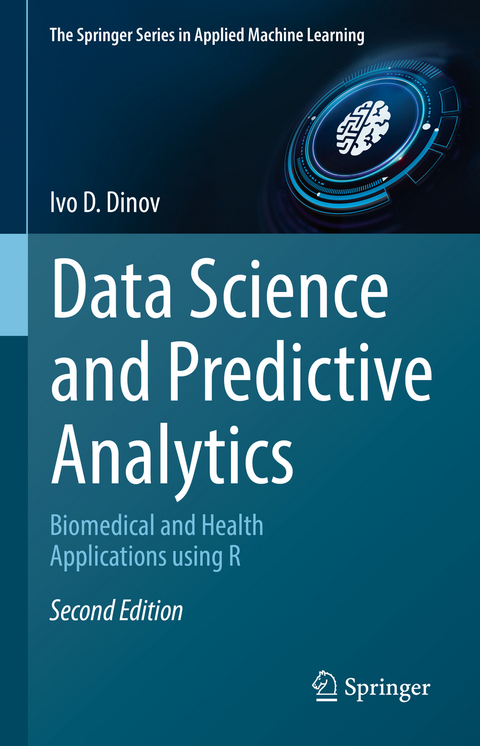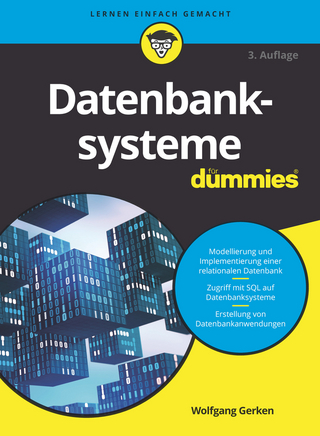
Data Science and Predictive Analytics
Springer International Publishing (Verlag)
978-3-031-17482-7 (ISBN)
Complementary to the enormous challenges related to handling, interrogating, and understanding massive amounts of complex structured and unstructured data, there are unique opportunities that come with access to a wealth of feature-rich, high-dimensional, and time-varying information. The topics covered in Data Science and Predictive Analytics address specific knowledge gaps, resolve educational barriers, and mitigate workforce information-readiness and data science deficiencies. Specifically, it provides a transdisciplinary curriculum integrating core mathematical principles, modern computational methods, advanced data science techniques, model-based machine learning, model-free artificial intelligence, and innovative biomedical applications. The book's fourteen chapters start with an introduction and progressively build foundational skills from visualization to linear modeling, dimensionality reduction, supervised classification, black-box machine learning techniques, qualitative learning methods, unsupervised clustering, model performance assessment, feature selection strategies, longitudinal data analytics, optimization, neural networks, and deep learning. The second edition of the book includes additional learning-based strategies utilizing generative adversarial networks, transfer learning, and synthetic data generation, as well as eight complementary electronic appendices.
This textbook is suitable for formal didactic instructor-guided course education, as well as for individual or team-supported self-learning. The material is presented at the upper-division and graduate-level college courses and covers applied and interdisciplinary mathematics, contemporary learning-based data science techniques, computational algorithm development, optimization theory, statistical computing, and biomedical sciences. The analytical techniques and predictive scientific methods described in the book may be useful to a wide range of readers, formal and informal learners, college instructors, researchers, and engineers throughout the academy, industry, government, regulatory, funding, and policy agencies. The supporting book website provides many examples, datasets, functional scripts, complete electronic notebooks, extensive appendices, and additional materials.
lt;b>Professor Ivo D. Dinov directs the Statistics Online Computational Resource (SOCR) at the University of Michigan and serves as associate director of the Michigan Institute for Data Science (MIDAS). He is an expert in mathematical modeling, statistical analysis, high-throughput computational processing, and scientific visualization of large, complex and heterogeneous datasets (Big Data). Dr. Dinov is developing, validating, and disseminating novel technology-enhanced pedagogical approaches for STEM education and active data science learning. His artificial intelligence and machine learning work involves compressive big data analytics, statistical obfuscation of sensitive data, complex time (kime) representation, model-based and model-free techniques for kimesurface analytics. Dr. Dinov is a member of the American Statistical Association, the American Mathematical Society, the American Physical Society, the American Association for the Advancement of Science, an honorary member of the Sigma Theta Tau International Society, and an elected member of the International Statistical Institute.
Chapter 1 - Introduction.- Chapter 2: Basic Visualization and Exploratory Data Analytics.- Chapter 3: Linear Algebra, Matrix Computing and Regression Modeling.- Chapter 4: Linear and Nonlinear Dimensionality Reduction.- Chapter 5: Supervised Classification.- Chapter 6: Black Box Machine Learning Methods.- Chapter 7: Qualitative Learning Methods - Text Mining, Natural Language Processing, Apriori Association Rules Learning.- Chapter 8: Unsupervised Clustering.- Chapter 9: Model Performance Assessment, Validation, and Improvement.- Chapter 10: Specialized Machine Learning Topics.- Chapter 11: Variable Importance and Feature Selection.- Chapter 12: Big Longitudinal Data Analysis.- Chapter 13: Function Optimization.- Chapter 14: Deep Learning, Neural Networks.
| Erscheinungsdatum | 22.02.2023 |
|---|---|
| Reihe/Serie | The Springer Series in Applied Machine Learning |
| Zusatzinfo | XXXIV, 918 p. 336 illus., 306 illus. in color. |
| Verlagsort | Cham |
| Sprache | englisch |
| Maße | 155 x 235 mm |
| Gewicht | 1586 g |
| Themenwelt | Mathematik / Informatik ► Informatik ► Datenbanken |
| Schlagworte | Big Data • Big Data methods • controlled variable selection • Cross-validation • Data Management • Data Science • Deep learning • hands-on machine learning • health analytics • machine learning • Natural Language Processing • Neural networks • predictive analytics • R • Statistical Computing • statistical learning in R • Streaming • Text Mining • Visualization |
| ISBN-10 | 3-031-17482-8 / 3031174828 |
| ISBN-13 | 978-3-031-17482-7 / 9783031174827 |
| Zustand | Neuware |
| Informationen gemäß Produktsicherheitsverordnung (GPSR) | |
| Haben Sie eine Frage zum Produkt? |
aus dem Bereich


